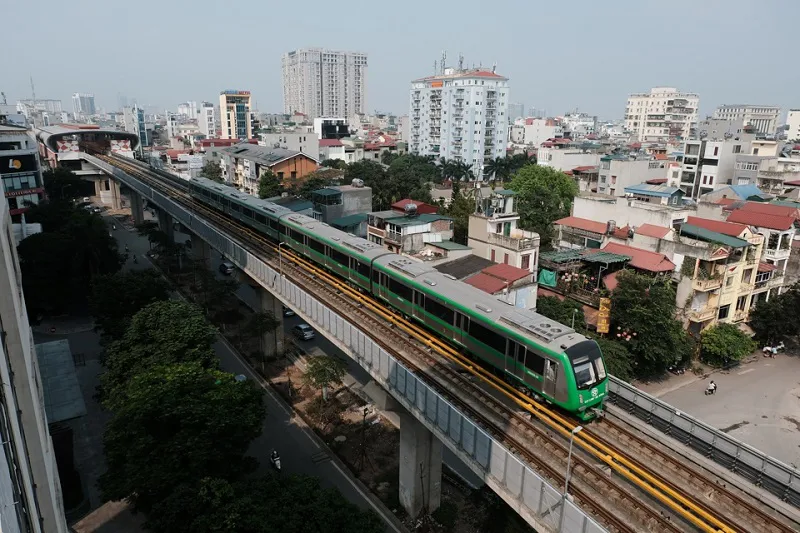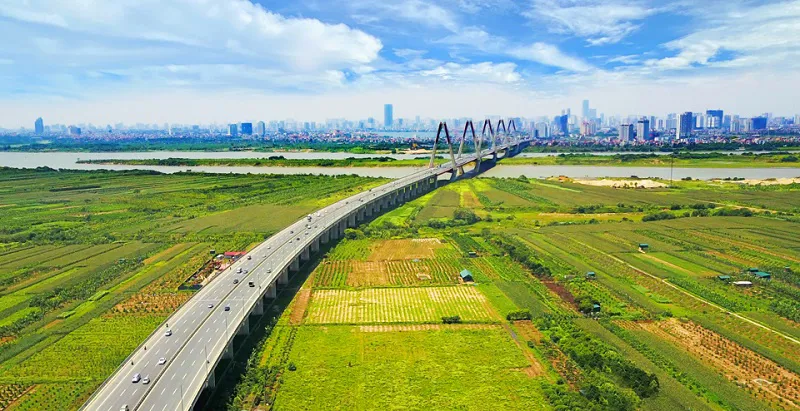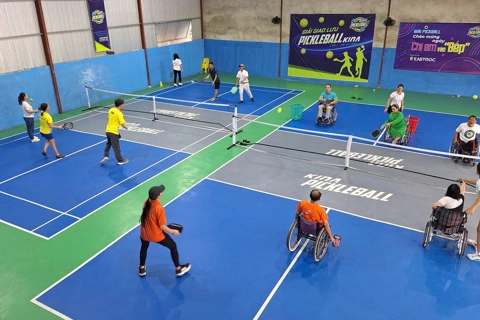Prime Minister backs more rail lines in Hanoi
The urban rail network is considered key to the growth of Hanoi and neighboring cities.
Prime Minister Pham Minh Chinh, on July 20, called on the authorities of Hanoi to study financing plans to improve the rail transport system.
| The Cat Linh-Ha Dong skytrain in Hanoi. Photo: Pham Hung/The Hanoi Times |
He urged the city government to seek financial support by issuing government bonds and obtaining concessional loans from official development assistance (ODA) partners.
The focus should be on Hanoi's urban rail network connecting the capital with neighboring provinces of Ha Nam, Vinh Phuc, Bac Ninh and Hung Yen, he told a conference on the development of the Red River Delta.
Chinh said the Ministry of Science and Technology must complete the transfer of the Hoa Lac Hi-Tech Park to Hanoi authorities in August.
"Hanoi and the hi-tech park will be the key to boosting socio-economic growth in the northern region and the Red River Delta," he said.
Speaking at the conference, Tran Sy Thanh, Chairman of the Hanoi People's Committee, said the capital is determined to become the hub of socio-economic growth for the entire region.
"The decision to set up the Red River Delta Development Council, which was announced on July 11, is a great boost for regional localities, including Hanoi," Thanh said.
"This is the foundation of regulatory development for Hanoi to become a smart, modern city with its own characteristics."
According to the mayor, Hanoi has put together action plans and creative solutions that fit the city's practical conditions.
Hanoi authorities are working to finalize the master plan for the capital's urban development to create a new driving zone, connect with other localities in the region, and boost the development of human and digital resources.
The city government is also working with the Ministry of Justice to finalize the amended Capital Law, which is expected to bring breakthroughs and make the best use of the city's resources and comparative advantages, thus making Hanoi the core for the growth of the region and the country.
| View of the Nhat Tan Bridge over the Red River from the northern side of Hanoi. Photo: Pham Hung/The Hanoi Times |
Hanoi plans to utilize its advantages to develop smart infrastructure and make culture and travel industries the economic spearheads. In addition, the city aims to facilitate the development of high-tech industries and low-carbon economic activities and focus on the development of the digital economy and digital society.
The city is also the first municipality in Vietnam to have resolved and planned to make the cultural industry a key economic sector. In 2022-2025, the city and local authorities plan to spend a total of VND93.2 trillion (US$3.94 billion) to boost the growth of the cultural, education, and health sectors.
Hanoi has completed many major infrastructure projects, such as the Cat Linh - Ha Dong elevated railway and the elevated Ring Road No. 2, and broke ground for the construction of Ring Road No. 4. In 2023, the city will complete the construction of the Vinh Tuy Bridge - Phase 2 and officially operate the Nhon - Hanoi Station urban railway.
Hanoi Mayor Thanh said that the city and other localities in the region would support each other to explore and make the best use of their own comparative advantages.
"We will continue to cooperate with other provinces and cities in the Delta region to develop regional transportation infrastructure, favor science and technology nurturing, and help each other improve the quality of human resources," he said.
Nguyen Chi Dung, Minister of Planning and Investment, said provinces and cities, especially Hanoi, must complete their provincial/city-level urban development plans for 2021-2050 and submit them to the Prime Minister for review by December 31, 2023.
"Ministries and city/provincial authorities must be proactive and creative to foster regional cooperation and optimize the use of resources," he said.
The Red River Delta comprises 11 provinces and cities, including the central cities of Hanoi and Haiphong, and nine provinces of Quang Ninh, Ha Nam, Hung Yen, Bac Ninh, Hai Duong, Thai Binh, Nam Dinh, Ninh Binh and Vinh Phuc.
The Council for the Development of the Delta Region was established on July 11 under Decision 826/QD-TTg. The Prime Minister heads the Council and the Minister of Planning and Investment is the permanent vice chairman. Other vice chairmen are the Ministers of Construction, Natural Resources and Environment, Science and Technology, Industry and Trade, and Information and Communication.
The Council's mission is to assist the Prime Minister in formulating policies and promoting socio-economic development in the Red River Delta, which should be sustainable, rapid and environmentally friendly.












